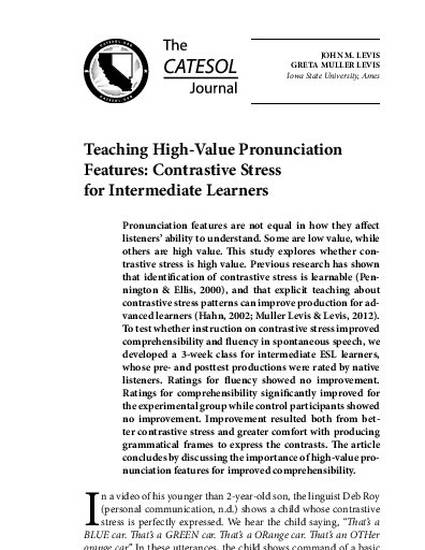
Pronunciation features are not equal in how they affect listeners’ ability to understand. Some are low value, while others are high value. This study explores whether contrastive stress is high value. Previous research has shown that identification of contrastive stress is learnable (Pennington & Ellis, 2000), and that explicit teaching about contrastive stress patterns can improve production for advanced learners (Hahn, 2002; Muller Levis & Levis, 2012). To test whether instruction on contrastive stress improved comprehensibility and fluency in spontaneous speech, we developed a 3-week class for intermediate ESL learners, whose pre- and posttest productions were rated by native listeners. Ratings for fluency showed no improvement. Ratings for comprehensibility significantly improved for the experimental group while control participants showed no improvement. Improvement resulted both from better contrastive stress and greater comfort with producing grammatical frames to express the contrasts. The article concludes by discussing the importance of high-value pronunciation features for improved comprehensibility.
Available at: http://works.bepress.com/john-levis/12/

This article is published as Levis, J.M., Levis, G.M.; Teaching High-Value Pronunciation Features: Contrastive Stress for Intermediate Learners. The CATESOL Journal, 2018; 30(1); 139-160. Posted with permission.